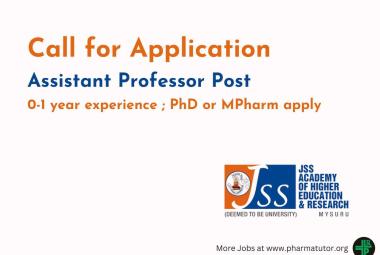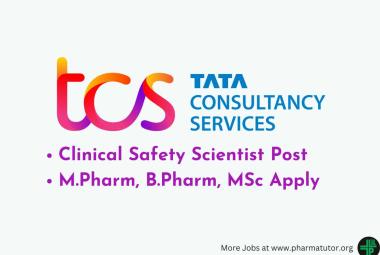 The New England Journal of Medicine (NEJM) published a study that shows Afinitor® (everolimus) tablets plus best supportive care (BSC) more than doubled progression-free survival (PFS), or time without tumor growth, versus placebo plus BSC in patients with advanced pancreatic neuroendocrine tumors (NET)[1].
The New England Journal of Medicine (NEJM) published a study that shows Afinitor® (everolimus) tablets plus best supportive care (BSC) more than doubled progression-free survival (PFS), or time without tumor growth, versus placebo plus BSC in patients with advanced pancreatic neuroendocrine tumors (NET)[1].
Data from the study, RADIANT-3 (RAD001 In Advanced Neuroendocrine Tumors), were first presented last year at the 12th World Congress on Gastrointestinal Cancer in Barcelona[2]. Regulatory submissions for everolimus to treat this patient population are underway worldwide.
[adsense:336x280:8701650588]
Results from the trial showed that everolimus more than doubled median PFS from 4.6 to 11.0 months when compared with placebo and reduced the risk of cancer progression by 65% (hazard ratio=0.35 [95% confidence interval (CI), 0.27 to 0.45]; p<0.001) in patients with advanced pancreatic NET. After 18 months, 34% of patients treated with everolimus (95% CI, 26 to 43) were alive and progression-free versus 9% of those treated with placebo (95% CI, 4 to 16), showing a more prolonged benefit for patients treated with everolimus[1].
Pancreatic NET originates from the islet cells of the pancreas and can grow aggressively[3]. It is a distinct and uncommon disease that is different from what is generally referred to as pancreatic cancer or pancreatic exocrine cancer[4]. At time of diagnosis the majority of patients have advanced disease, meaning the cancer has spread to other parts of the body and has become more difficult to treat[3,5]. The median survival duration for patients with advanced pancreatic NET is 24 months[6].
"A patient diagnosed with advanced NET may have limited treatment options," said James Yao, MD, Associate Professor of Medicine, The University of Texas MD Anderson Cancer Center, Houston, Texas. "Results from the RADIANT-3 trial are encouraging and demonstrate the potential benefit of treating advanced pancreatic NET with the mTOR inhibitor everolimus."
Everolimus targets mTOR, a protein that acts as an important regulator of tumor cell division, blood vessel growth and cell metabolism[7]. Preclinical and clinical data have established the role of mTOR in the development and progression of several types of tumors, including pancreatic NET.
The US Food and Drug Administration (FDA) has granted everolimus priority review designation for the application of advanced NET of gastrointestinal (GI), lung or pancreatic origin based on results of RADIANT-3 and another Phase III trial, RADIANT-2. Priority review status is granted to therapies that offer major advances in treatment or provide a treatment where no adequate therapy exists[8].
This status accelerates the standard review time for everolimus from 10 to six months[8]. Since the data included in the submission may require further discussion, the FDA is likely to call an Advisory Committee meeting, which could result in the FDA extending the review period. Worldwide regulatory filings for everolimus in this indication are also underway.
[adsense:468x15:2204050025]
About RADIANT-3
RADIANT-3 is a Phase III prospective, double-blind, randomized, parallel group, placebo-controlled, multicenter study. The trial examined the efficacy and safety of everolimus plus BSC versus placebo plus BSC in 410 patients with advanced, low- or intermediate-grade pancreatic NET, also known as islet cell tumors. Patients who met the study entry criteria were randomized 1:1 to receive either everolimus 10 mg once-daily (n=207) or daily placebo (n=203) orally, both in conjunction with BSC[1].
The primary endpoint of RADIANT-3 is PFS. Secondary endpoints include safety, objective response rate (confirmed according to RECIST), duration of response and overall survival[1].
In the study, everolimus maintained a safety profile consistent with the prescribing information and previous studies of the drug. The most frequent all grade, drug-related adverse events (>=20%) were stomatitis/oral mucositis/ulcers (64% everolimus vs. 17% placebo; includes stomatitis, aphthous stomatitis, mouth ulceration and tongue ulceration), rash (49% vs. 10%), diarrhea (34% vs. 10%), fatigue (31% vs. 14%), infections (23% vs. 6%), nausea (20% vs. 18%), peripheral edema (20% vs. 3%) and decreased appetite (20% vs. 7%); most were grade one or two. Grade three and four adverse events (>=5%) include stomatitis/oral mucositis/ulcers (7% vs. 0%; includes stomatitis, aphthous stomatitis, mouth ulceration and tongue ulceration), anemia (6% vs. 0%) and hyperglycemia (5% vs. 2%). Median exposure to everolimus was 2.3-fold longer than exposure to placebo (38 vs. 16 weeks)[1].
About RADIANT-2
RADIANT-2 is a Phase III randomized, double-blind, placebo-controlled, multicenter study. The trial examined the efficacy and safety of everolimus plus Sandostatin® LAR® (octreotide acetate for injectable suspension) versus placebo plus octreotide LAR in 429 patients with advanced carcinoid tumors. Patients who met the study's entry criteria were randomized 1:1 to receive either oral everolimus (10 mg daily) plus octreotide LAR (30 mg intramuscularly every 28 days) or placebo daily plus octreotide LAR. Patients had radiological documentation of disease progression within 12 months prior to randomization[9].
The study did not meet its primary endpoint of PFS as assessed by independent radiological review (p=0.026 vs. p=0.0246 predefined) (hazard ratio=0.77 [95% CI, 0.59 to 1.00]). Secondary endpoints from the trial include safety, overall response rate and overall survival[9].
In the initial review of the data an imbalance in baseline characteristics was observed between the two treatment arms, including prior treatment with chemotherapy, primary tumors located in the lung and a poorer World Health Organization (WHO) performance status (an assessment of each patient's functional/physical performance). Further, inconsistencies were found between analyses of radiology scans, which resulted in censoring of patients from the trial. These imbalances and the censoring of data seem to favor the control arm and may have impacted the outcome of the study. Additional analyses to adjust for imbalances in the treatment arms show everolimus plus octreotide LAR significantly reduced risk of disease progression (hazard ratio=0.60 [95% CI, 0.44 to 0.84])[9].
In the study, the most frequent all grade drug-related adverse events with everolimus plus octreotide LAR were stomatitis, rash, fatigue, diarrhea, nausea and infections; most were grade one or two. Grade three and four adverse events (>=5%) with everolimus plus octreotide LAR were stomatitis (7%; includes stomatitis, aphthous stomatitis, mouth ulceration and tongue ulceration), fatigue (7%), diarrhea (6%), infections/infestations (5%) and hyperglycemia (5%)[9].
About neuroendocrine tumors (NET)
Neuroendocrine tumors arise from cells that can produce and secrete a variety of hormones that regulate bodily functions[10]. There are many types of NET that can occur throughout the body; however, most are found in the GI tract, pancreas and lungs[6,11]. Many patients with NET have no symptoms or nonspecific symptoms, such as flushing and diarrhea, which often lead to delays in diagnosis of five to seven years[12,13]. As a result, many patients with NET often have advanced disease when diagnosed, meaning the cancer has spread to other parts of the body and has become more difficult to treat[3,5]. Approximately 64% of patients with pancreatic NET are diagnosed in advanced stages[6].
About Afinitor (everolimus)
Afinitor® (everolimus) tablets is approved in the European Union (EU) for the treatment of patients with advanced renal cell carcinoma (RCC) whose disease has progressed on or after treatment with vascular endothelial growth factor (VEGF)-targeted therapy and also in the US for the treatment of patients with advanced RCC after failure of treatment with sunitinib or sorafenib.
Afinitor is also approved in the US to treat patients with subependymal giant cell astrocytoma (SEGA) associated with tuberous sclerosis who require therapeutic intervention but are not candidates for curative surgical resection. The effectiveness of Afinitor is based on an analysis of change in SEGA volume. Clinical benefit such as improvement in disease-related symptoms or increase in overall survival has not been shown. Novartis has submitted marketing applications for everolimus to the European Medicines Agency (EMA) and the Swiss Agency for Therapeutic Products (Swissmedic), and additional regulatory submissions are underway worldwide.
In the EU, everolimus is available in different dosage strengths under the trade name Certican® for the prevention of organ rejection in heart and kidney transplant recipients. In the US, everolimus is available in different dosage strengths under the trade name Zortress® for the prophylaxis of organ rejection in adult patients at low-moderate immunologic risk receiving a kidney transplant.
Everolimus is exclusively licensed to Abbott and sublicensed to Boston Scientific for use in drug-eluting stents.
Not all indications are available in every country. As an investigational compound the safety and efficacy profile of everolimus has not yet been established in NET. Access to everolimus outside of the approved indications has been carefully controlled and monitored in clinical trials designed to better understand the potential benefits and risks of the compound. Because of the uncertainty of clinical trials, there is no guarantee that everolimus will become commercially available for NET or any additional indications anywhere in the world.
About Sandostatin LAR (octreotide acetate for injectable suspension)
Sandostatin® LAR® is a long-acting, injectable depot formulation of octreotide acetate that is indicated for the treatment of patients with acromegaly who are adequately controlled on s.c. treatment with Sandostatin; in whom surgery or radiotherapy is inappropriate or ineffective; or in the interim period until radiotherapy becomes fully effective and for the treatment of patients with symptoms associated with functional GEP-NET in whom symptoms are adequately controlled on s.c. treatment with Sandostatin.
Sandostatin LAR was first approved in France in June 1995 and is currently approved in 85 countries. For more than a decade, Sandostatin LAR has achieved a long-standing track record of sustained efficacy with a well-established safety profile.
Not all indications are approved in every country.
[1] Yao, et al. Everolimus for Advanced Pancreatic Neuroendocrine Tumors. New Eng J Med 2011;364:514-23.
[2] Yao, et al. Everolimus versus placebo in patients with advanced pancreatic neuroendocrine tumors (pNET) (RADIANT-3). 12th World Congress on Gastrointestinal Cancer, Barcelona. July 1, 2010.
[3] National Library of Medicine and the National Institutes of Health. Pancreatic islet cell tumor. Available at http://www.nlm.nih.gov/medlineplus/ency/article/000393.htm. Accessed February 2011.
[4] American Cancer Society Detailed Guides. Pancreatic Cancer. Available at http://www.cancer.org/Cancer/PancreaticCancer/DetailedGuide/pancreatic-cancer-what-is-pancreatic-cancer. Accessed February 2011.
[5] Halfdanarson, et al. Pancreatic neuroendocrine tumors (PNETs): incidence, prognosis and recent trend toward improved survival. Annals of Onc 19: 1727-1733, 2008.
[6] Yao, et al. One Hundred Years After "Carcinoid:" Epidemiology of and Prognostic Factors for Neuroendocrine Tumors in 35,825 Cases in the United States. Journal of Clinical Oncology. June 20 2009; vol. 26, number 18.
[7] Motzer, et. al. Phase 3 Trial of Everolimus for Metastatic Renal Cell Carcinoma. Cancer 2010 Sep; 116(18):4256-4265.
[8] US Food and Drug Administration. Fast Track, Accelerated Approval and Priority Review. Available at http://www.fda.gov/forconsumers/byaudience/forpatientadvocates/speedingaccesstoimportantnewtherapies/ucm128291.htm. Accessed February 2011.
[9] Pavel et al. A randomized, double-blind, placebo-controlled, multicenter phase III trial of everolimus + octreotide LAR vs placebo + octreotide LAR in patients with advanced neuroendocrine tumors (NET) (RADIANT-2). 35th European Society for Medical Oncology Congress. October 9, 2010.
[10] National Library of Medicine and the National Institutes of Health. Neuroendocrine Tumor. Available at http://www.cancer.gov/dictionary/?CdrID=44904. Accessed February 2011.
[11] American Cancer Society Detailed Guides. Gastrointestinal Carcinoid Tumors. Available at http://www.cancer.org/Cancer/GastrointestinalCarcinoidTumor/DetailedGuide/ gastrointestinal-carcinoid-tumors-key-statistics. Accessed February 2011.
[12] Modlin, et al. Priorities for Improving the Management of Gastroenteropancreatic Neuroendocrine Tumors. J Natl Cancer Inst 2008;100:1282-1289.
[13] National Library of Medicine and the National Institutes of Health. Carcinoid syndrome. Available at http://www.nlm.nih.gov/medlineplus/ency/article/000347.htm. Accessed February 2011.








